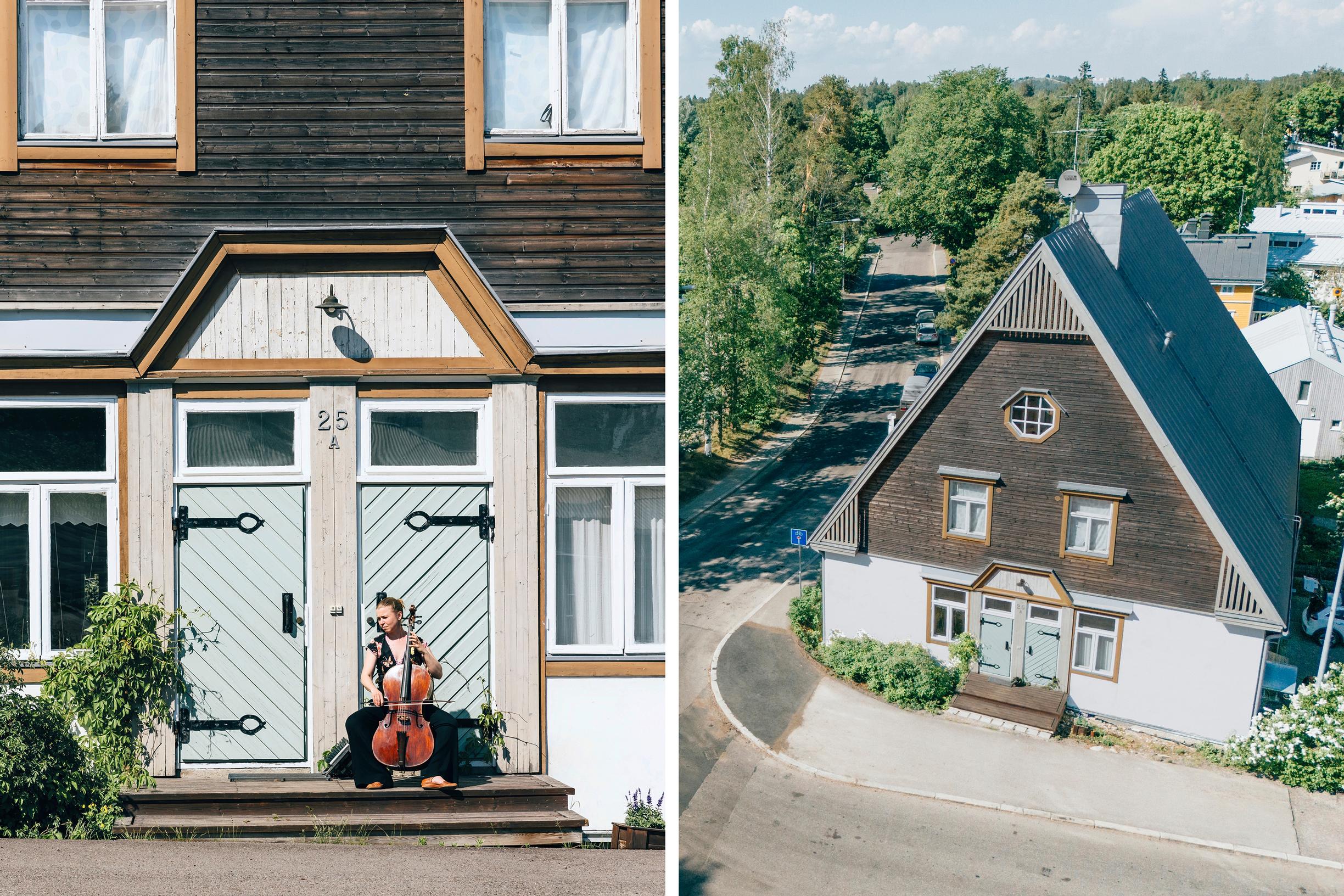
Musician couple’s unique home in a village church—“We often describe it as a home for delicate instruments”
Heidi Peltoniemi and her spouse, Aapo Häkkinen, live in a former village church in Helsinki, whose spiritual atmosphere and acoustics are utterly unique. The couple believes in the power of classical music, visual arts, and community.
The towering plastered log house with its impressive rows of windows stands out magnificently in the streetscape. By looking at its exterior features, the building can still be recognized as an old church that was in use for four decades.
The attic still has the stairs that once led to the bell tower. The church bells likely rang on the second Sunday of Advent in December 1929, when the Pitäjänmäki village church in Helsinki was inaugurated with services in both Swedish and Finnish. According to a local history, about 400 people had gathered at the event. In his inauguration speech, Dean S.W. Roos emphasized the power of teamwork, noting that without numerous communal efforts, the church would scarcely have been built.
“Sometimes, when the doors are open, curious passersby wander into the entryway, wondering what kind of building this is, not realizing it’s a private home,” says Heidi Peltoniemi.
The village church has been the home of cellist Heidi and her spouse, harpsichordist Aapo Häkkinen for about four years. Their son, Leo, has already moved out on his own.
Heidi Peltoniemi and Aapo Häkkinen organize home concerts at their house regularly.
The Pitäjänmäki village church in Helsinki was inaugurated in 1929. Berndt Blom, who also designed fire stations, contributed to the community effort as an architect. The roof was repaired last summer.
When the house first went on sale in the late 1990s, the for sale advertisement enticed buyers to purchase “your own church.” The first private owner renovated the building so thoroughly that Heidi and Aapo haven’t had to do much more than surface renovations. Besides their apartment, there is also a former sexton’s residence upstairs.
Originally, the musicians hadn’t even planned on moving until Heidi saw the sale ad on social media. She then remembered having performed once before in the hall of the house.
“This is a very memorable house. Even though at least ten years had passed, I recalled how wonderful it was to play here.”
In their previous home in Töölö, there wasn’t enough space to store all their instruments. Some were stored by relatives and friends, which wasn’t very practical. Transporting rare, unique keyboard instruments like harpsichords and clavichords back and forth was risky and cumbersome.
During the last couple of decades before the sale, the house was used to manufacture electric saunas and boats.
Even though Heidi was charmed by the enchanting character and the certain kind of spirituality of the house, she thought it nearly impossible that her spouse, who had lived in the city center since his childhood, would be excited about moving farther away. Fortunately, her concern was unfounded, as the family’s other musician quickly recognized the potential of the place and its excellent acoustics. Currently, all 13 of their instruments have their own spaces in the home.
“We often describe it as a home for delicate instruments. Good acoustics were one of the main reasons we moved here. Otherwise, we wouldn’t be able to do anything here.”
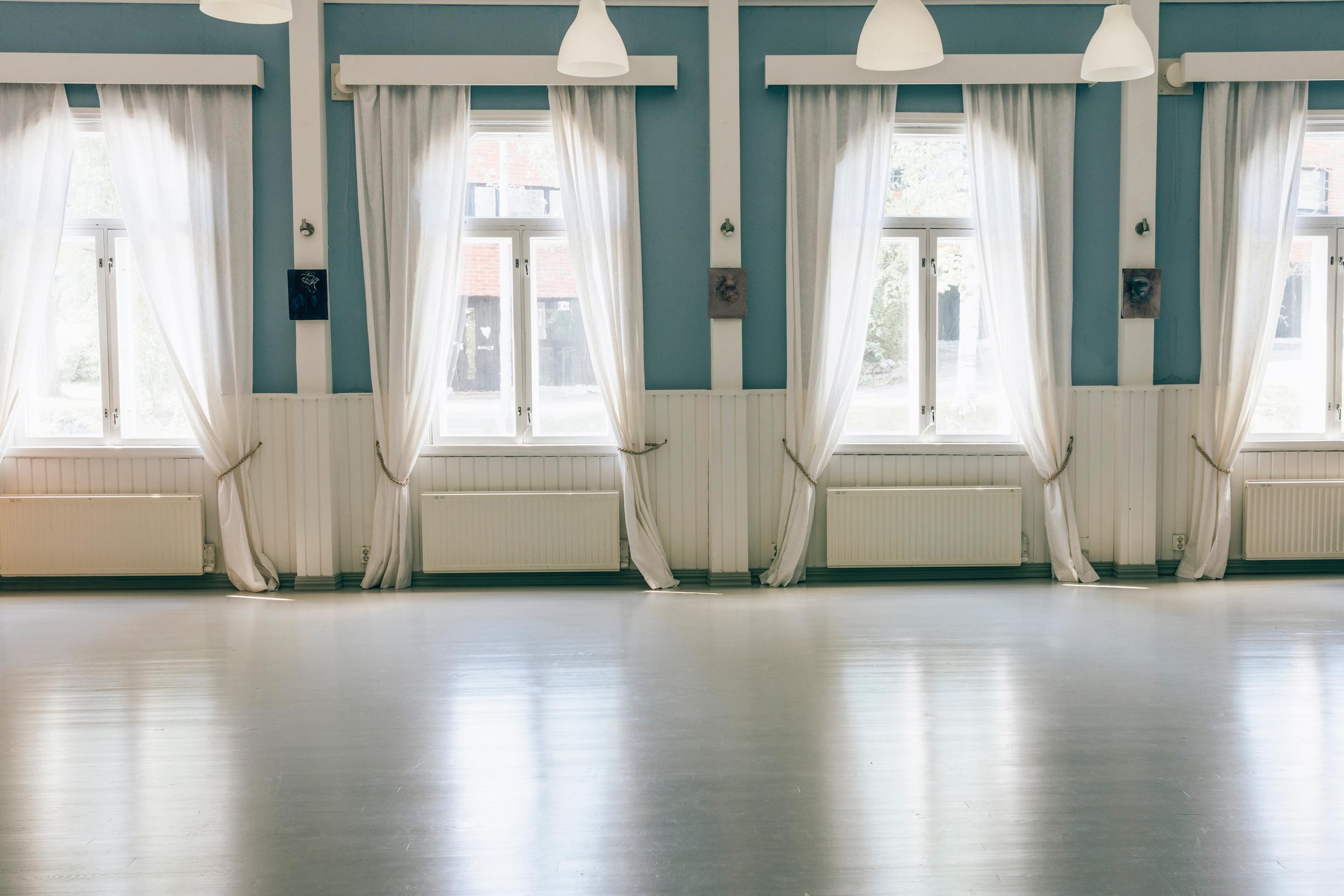
Today, this house fulfills the dream of a couple in search of unique living, but the church was once also the sincere, long-held wish of Pitäjänmäki residents. The dream of having their own church began to emerge during the final years of the Grand Duchy of Finland (1809–1917; Finland became independent in 1917), with the population growing and the idea of every village having its own church spreading from Denmark and England.
Village churches began to appear in places that already had cultural and local heritage associations. The work took time: the residents began collecting funds for the Pitäjänmäki village church nine years before construction started. Finally, they decided to buy a house slated for demolition in the city center and build the church from its materials next to the children’s home of the then Helsinki Deaconess Institute, where a villa had previously burned down.
Architect Berndt Blom, who also worked as a fire chief and later designed fire stations, contributed to the project out of the goodness of his heart.
The new village church, completed in 1929, was a significant demonstration of community spirit at the time. An honorable mention was given to the staff of the neighboring children’s home, who are said to have painted the interiors.
After all the hard work, the earthly journey of the church was not easy. Difficulties arose during World Wars when priests were called to the front. Additionally, funds had to be constantly raised for the building’s maintenance.
Heidi Peltoniemi started playing the cello when she was 10 years old. She also teaches chamber music and plays in Helsinki Baroque Orchestra; her partner Aapo Häkkinen is the artistic director of the orchestra.
The couple often describe their home as a home for delicate instruments. There is a magnificent contemporary painting under the inner lid of the harpsichord. One of the clavichords in the home originates from a Tyrolean manor from the 18th century.
The musicians' work desks accumulate all kinds of spare parts, starting from harpsichord screws.
After many twists and turns, when a new church was inaugurated in the spring of 1959, the village church became redundant and was acquired by the Deaconess Institute. The building was then rented out for decades. For the last few decades before the sale, the premises served small industries. During that time, the house was used for manufacturing electric saunas and boats.
Heidi thinks it’s wonderful to be part of the continuum, as valuing history is important to her. What warms her heart the most is the feeling that the house has been a beloved project for everyone who has been and lived there. It was sad to hear that there was once an application to demolish the property. The city did not grant the demolition permit because it saw the architectural, cultural, and local historical value of the building.
The historical home is a perfect fit for the musician couple, who specialize in old music. Because of this, they are attracted to cultural roots and all things traditional.
“I appreciate the beautiful and old that were made with inspiration and soul. We want to be among those who preserve and also pass it on,” Heidi says.
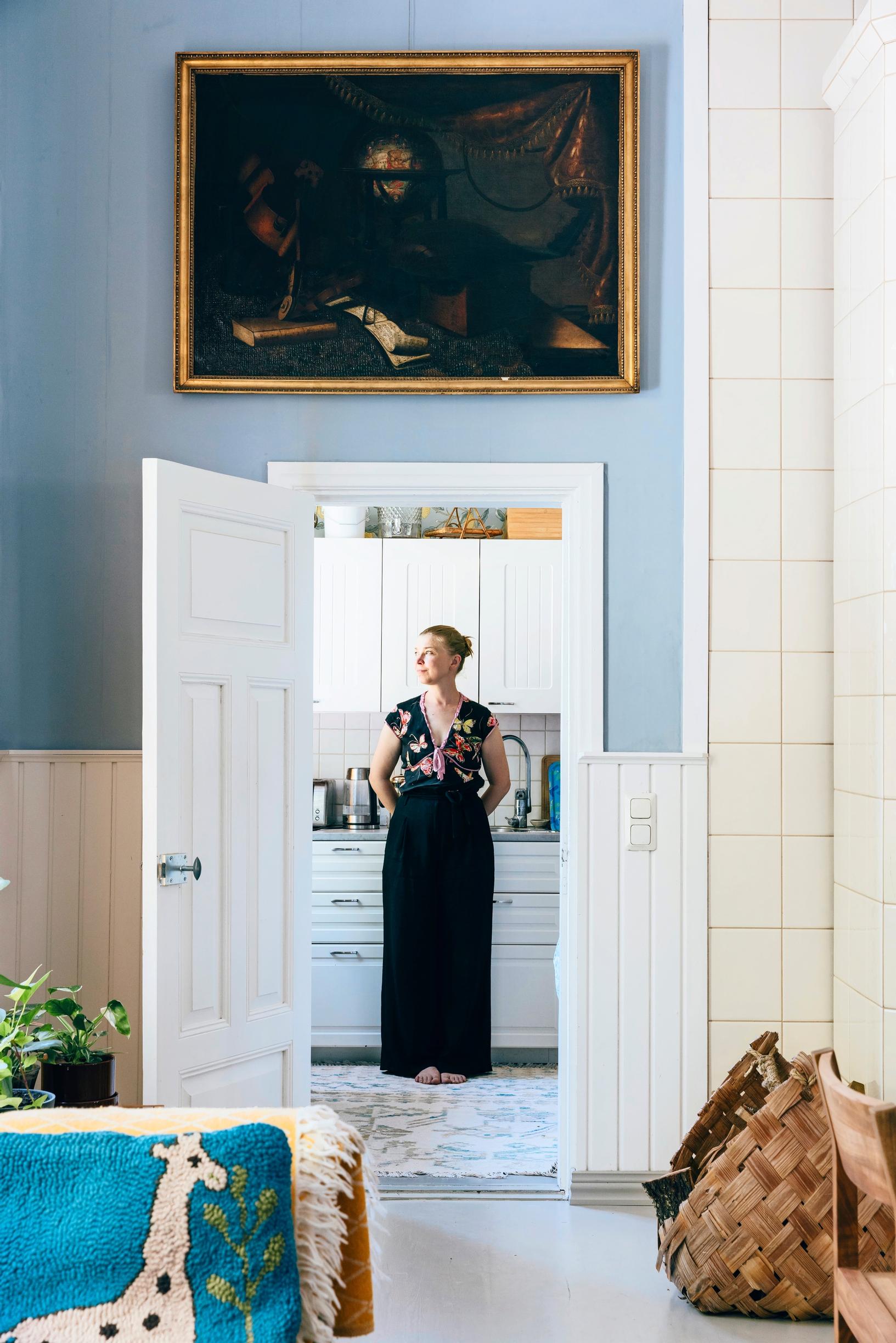
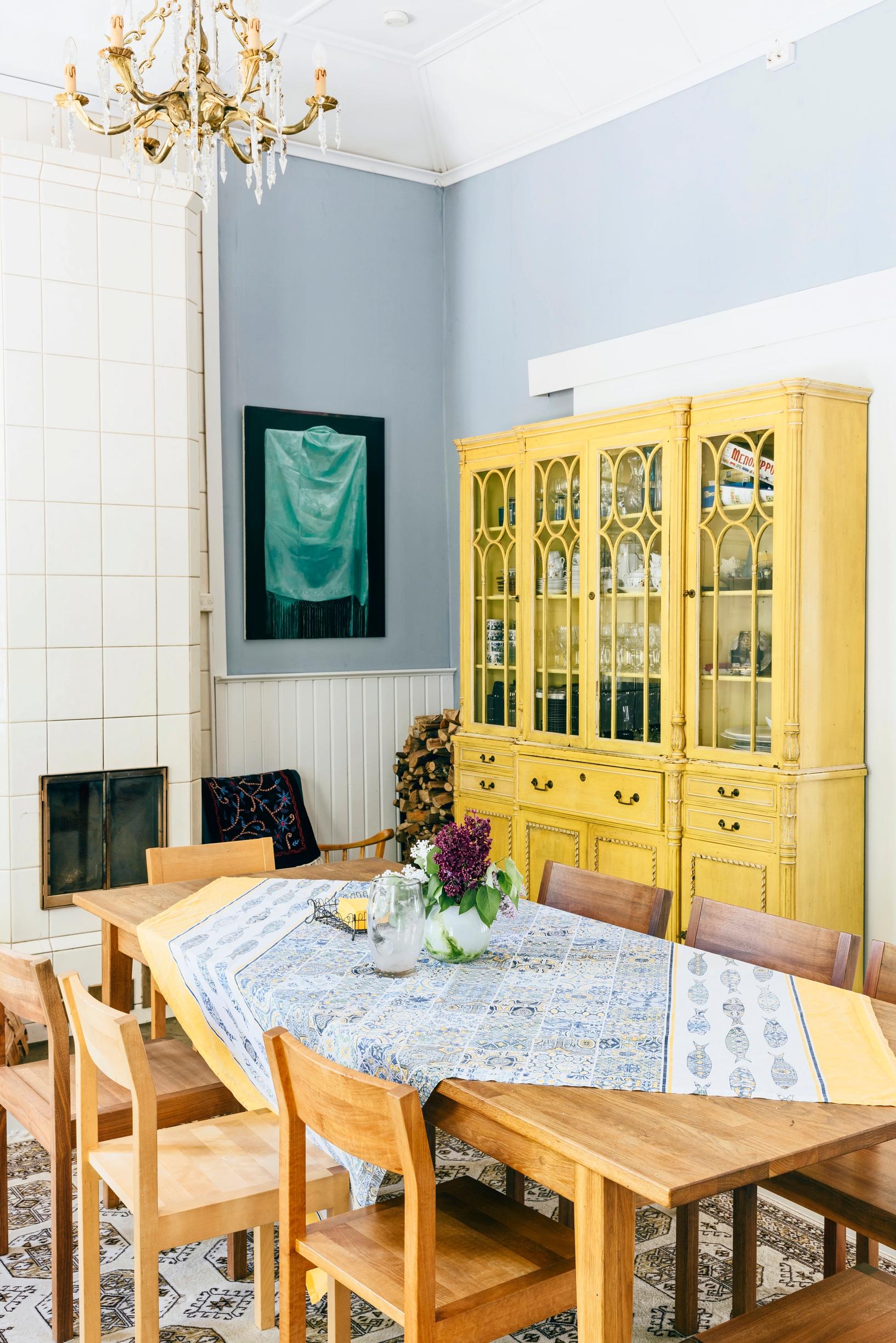
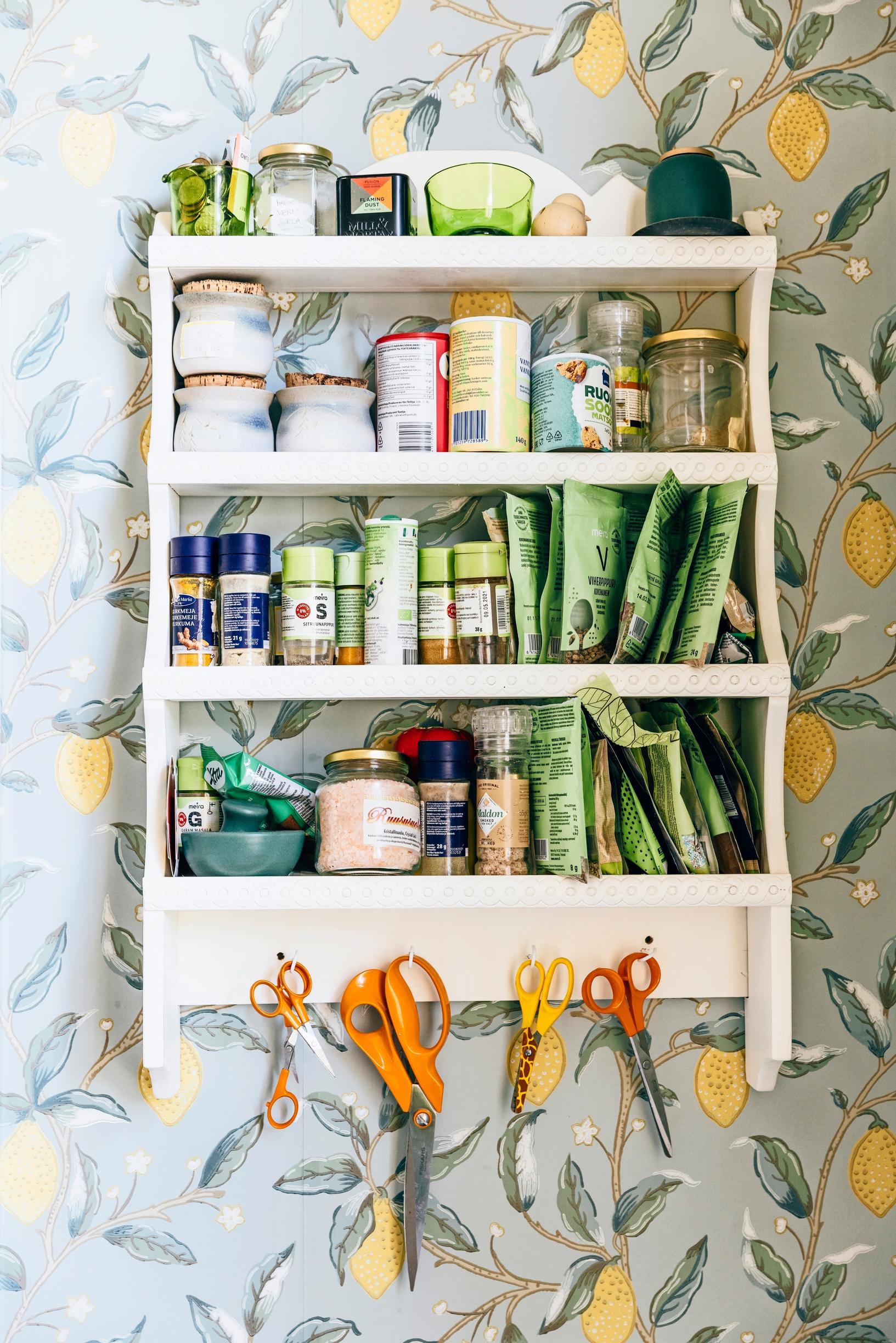
The heart of the home and the most impressive space is the church hall. Fresh air doesn’t run out quickly, as there is about 80 square meters of space with the ceiling height approaching 4.5 meters.
The atmosphere is bright, as plenty of light enters into the hall through the long row of windows. The hall has indeed been described as homely from the beginning. The pulpit, altar, and other ecclesiastical symbols are now just memories, but there was plenty of time, just over 30 years, to deliver sermons, hold Sunday schools, celebrate confirmations, and say final goodbyes in the hall.
The smaller rooms adjacent to the hall were originally used by a sewing circle. Currently, they serve as the family’s living room and bedrooms. The small kitchen has always been in the same place.
Opening the doors of our own home for concerts is a form of civic activism.
In the home of musicians, the importance of acoustics is clear. The wooden floor and porous wood fiber boards on the log walls give the hall’s acoustics a pleasant softness. Heidi and Aapo renewed the hall’s floor, which they felt creaked too much. Perfect silence isn’t achievable, but the creaking would have disturbed the concert experience.
Heidi also enjoys playing in the foyer, which she describes as having dry acoustics. It’s a luxury to have different acoustic spaces in one’s own home.
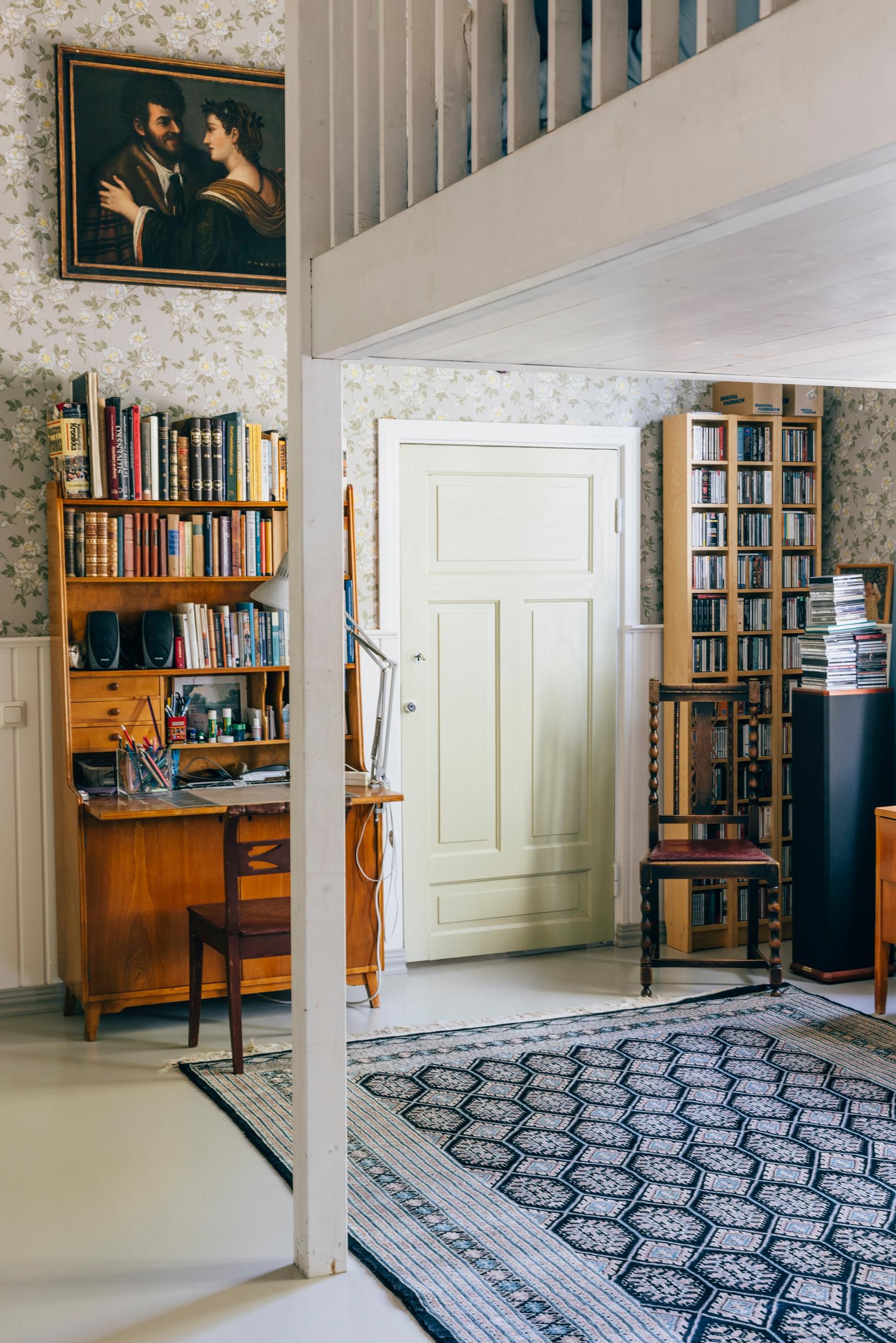
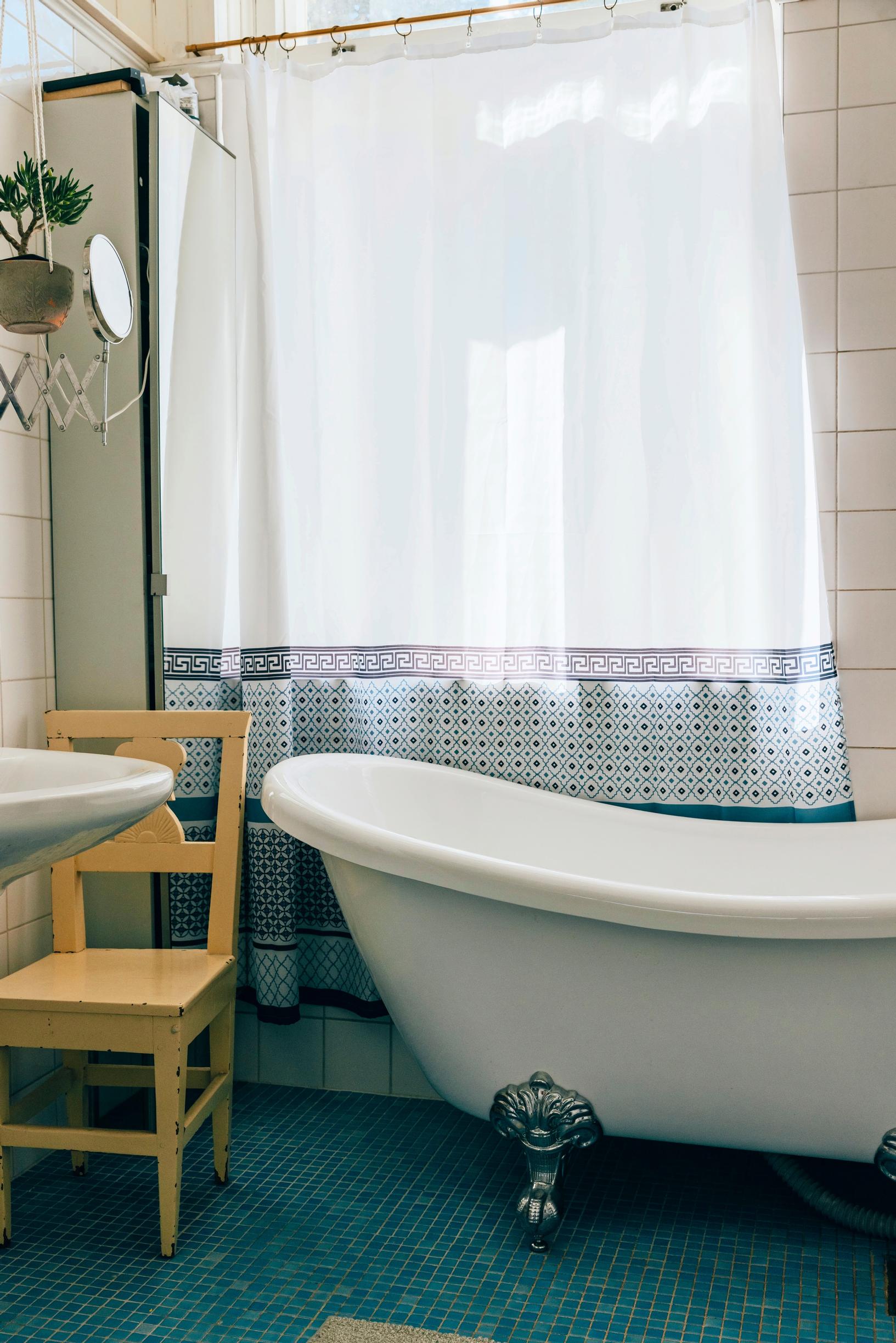
Singing hymns has been replaced by chamber music. Actually, music has lived in this house for a long time. There were numerous events and concerts even during the previous residents’ time.
It was also clear to Heidi and Aapo that they would start hosting monthly home concerts to reduce the gap between performers and audiences. The atmosphere is more intimate than in large concert halls, where the spaces don’t necessarily allow for interaction and encounters in the same way. Heidi often adds to the cozy atmosphere by baking treats for the intermissions.
Opening up their own home has felt a bit emotional. It has also been a way to respect the traditions of the house, as it has always been open in some way or another. For the most part, concert guests have been aware they’re entering someone’s home and have respected that. Heidi wishes that similar activities would be more widespread.
“This is a form of civic activism. The aim is to make this corner of the world a bit more beautiful, community-oriented, and full of chamber music.”
One of Heidi's favorite places at home is the shady backyard terrace, which was added to the house later. The sheltered garden is spacious and peaceful.
The old small village church has worked well as a home where the mind can rest and rejuvenate. The hall, kitchen, living room, and three bedrooms fit into the generous 200 square meters. Heidi mentions that as a gardener, she also enjoys the shady terrace, which was built in the later years.
Heidi and Aapo have sometimes considered building additional space in the attic, but for fire safety reasons, it would have required a second exit. For now, the attic serves as storage.
A few years ago, the housing company built a modern sauna building with a greenhouse and a separate small apartment in the garden.
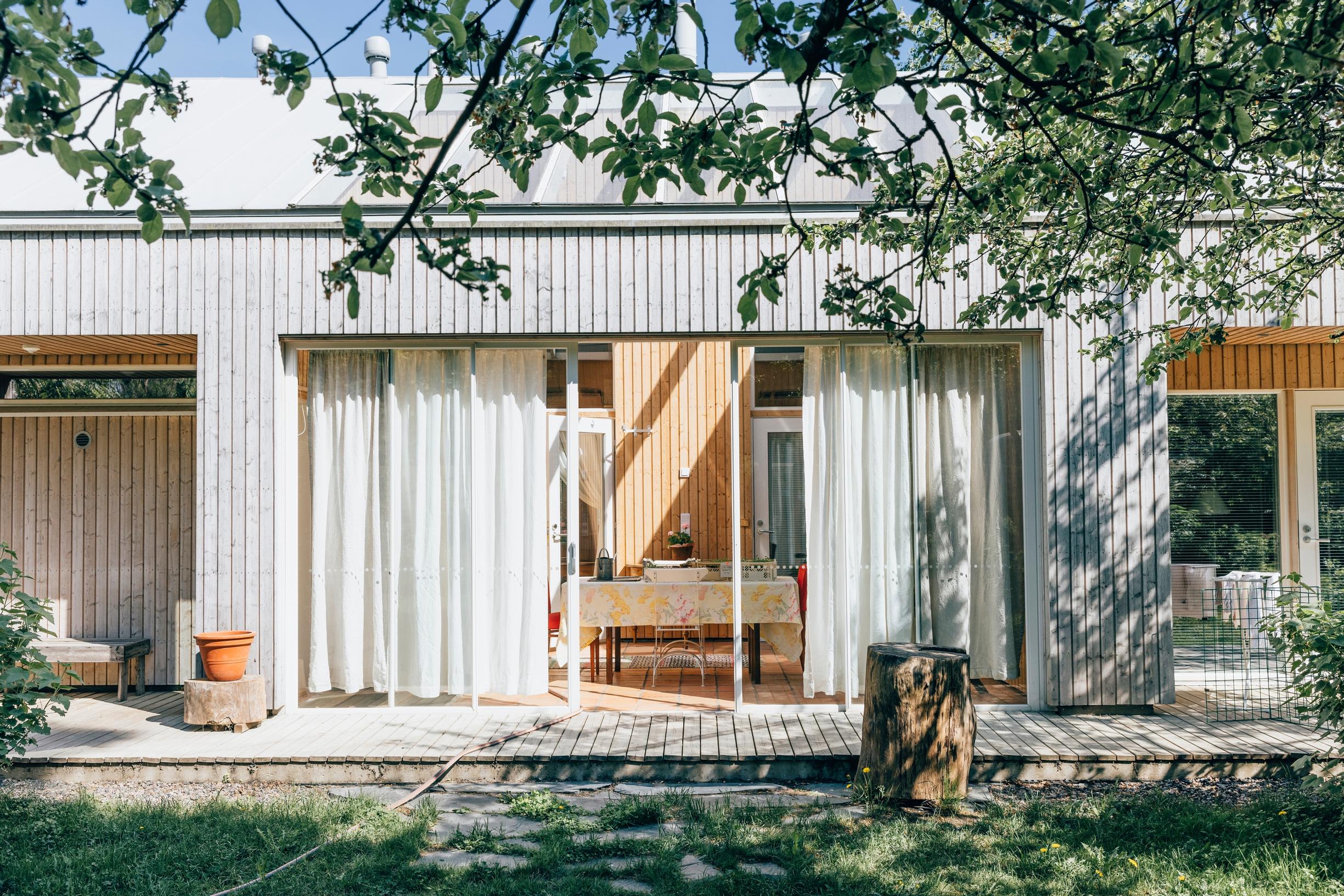
The couple hasn’t missed living in the city center. The home suits their lifestyle that blends work and leisure together.
“Here, we have our own peace and quiet to do our own things, to think and breathe. The home fits our idea that we have only this one life, which we try to live so that it feels good and authentic,” Heidi concludes.
The home doesn’t live on music alone but on art in many forms. Visual art by various artists living in Helsinki is displayed in the hall. Heidi and Aapo try to choose artworks that resonate harmoniously with chamber music in some way.
“I feel that you must look at this universe and art from different perspectives. It deepens your own art, which is fundamentally about being human and communicating with others. The fact that art communicates with other art is purely something that enriches our lives. They don’t detract from each other.”
Heidi enjoys visuality but wants to be in harmony with what she gathers around her. The couple likes to buy furniture and items for the home at auctions and from other second-hand sources.
“I’ve also let go of the idea that everything has to be tip-top. Some mess is allowed,” Heidi laughs.


